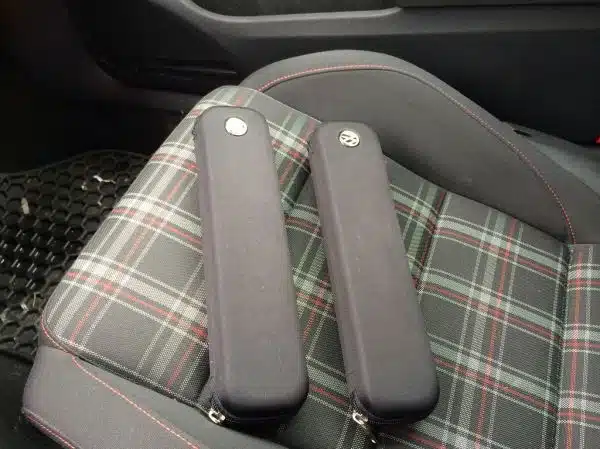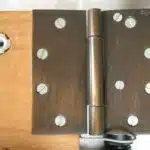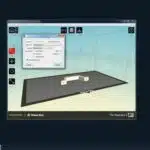Installing a pocket door in your home is an excellent way to save space and add a touch of elegance to your interior design. Pocket doors are sliding doors that disappear into the wall when opened, making them ideal for rooms with limited space or narrow hallways. However, installing a pocket door requires some carpentry skills and knowledge of the process involved. In this article, we will provide a step-by-step guide on how to install a pocket door, including the necessary tools and materials required for the job.
Before you begin installing a pocket door, it’s essential to understand that this is not a simple DIY project. It requires proper planning, preparation, and execution to ensure that the door functions correctly and fits seamlessly into your home’s decor. This article aims to provide you with expert advice on how to install a pocket door correctly, from choosing the right kind of pocket door frame to fitting the hardware and finishing touches. By following our guide carefully, you’ll be able to install your own pocket door confidently and transform your living space into something special.
Assessing Your Space For A Pocket Door
Pocket doors are a great option for homeowners who want to save space or add a touch of modernity to their home. One of the main benefits of pocket doors is that they don’t swing open like traditional doors, which means you won’t have to worry about blocking valuable floor space. Pocket doors also offer greater privacy and noise reduction compared to other types of doors.
However, there are some disadvantages to consider before installing a pocket door. First, the installation process can be more complicated than other types of doors as it requires cutting into the wall and creating a space for the door to slide into. Additionally, because pocket doors slide into the wall, it can be difficult to access them if something goes wrong with the mechanism or if repairs are needed.
Before deciding on whether or not to install a pocket door in your home, it’s important to assess your space and determine if it’s a good fit for this type of door. This includes measuring the available wall space to ensure there’s enough room for the door frame and considering any potential obstacles such as electrical wiring or plumbing that may need to be moved before installation. Once you’ve determined that your space is suitable for a pocket door, you can move on to choosing the right pocket door frame.
Choosing The Right Pocket Door Frame
When choosing a pocket door frame, one of the most important considerations is the size of the door. The frame should be able to accommodate the size of the door without obstructing the doorway. Additionally, the wall thickness should be taken into consideration when selecting a frame. The frame should be compatible with the wall’s thickness to ensure a secure fit. When selecting a frame, there are two main types available: single and double. Single frames offer versatility and are suitable for many applications, while double frames provide additional stability for heavier doors. Finally, it is important to consider the material of the frame as well, as certain materials are more durable and may require less maintenance.
Door Size
As a carpentry expert, it is important to choose the right pocket door frame for your home. One key factor to consider when selecting a pocket door frame is the size of the door. Pocket door dimensions vary, so it is critical to measure your door opening accurately before purchasing a frame.
The door opening size must be large enough to accommodate the chosen pocket door dimensions. If the opening is not wide enough, you may need to widen it or select a smaller pocket door. On the other hand, if the opening is too wide, you may need to add fillers or shims between the frame and wall studs.
It’s essential to get these measurements right as they impact how well your pocket doors fit and function. With careful planning and precise measurements, you can install a pocket door that fits beautifully within your space and serves its intended purpose effectively. Remember that choosing the right pocket door frame requires attention to detail and skilled craftsmanship.
Wall Thickness
When choosing the right pocket door frame, it is essential to take into consideration the wall thickness. Knowing the wall thickness will determine which frame to choose and how much space you will have for your chosen door size. Measuring accuracy is critical when determining wall thickness, as different walls may have varying thicknesses.
Common wall thicknesses in homes include 2×4 and 2×6 walls. A 2×4 wall typically has a thickness of around 3.5 inches, while a 2×6 wall has a thickness of approximately 5.5 inches. These measurements are important to note when selecting the correct pocket door frame.
If the selected pocket door frame is too narrow for the wall’s thickness, you may need to add additional shimming or framing material to fill the gap between the frame and the studs. It is also important to ensure that there is enough clearance for your chosen door size within the available space. By taking precise measurements and selecting an appropriate pocket door frame, you can achieve smooth operation and optimal functionality of your pocket doors.
In conclusion, understanding common wall thicknesses and measuring accuracy are crucial factors in choosing the right pocket door frame for your home. With careful planning and proper installation techniques, you can install a beautiful and functional pocket door that suits your space perfectly. Remember that carpentry requires attention to detail, so be sure to take accurate measurements before making any decisions regarding your pocket doors’ installation.
Frame Type
Choosing the right pocket door frame is an important decision when it comes to home improvement or renovation. In addition to wall thickness, you also need to consider different frame types and their pros and cons. There are two main types of pocket door frames: built-up frames and knockdown frames.
Built-up frames are pre-assembled in the factory, which means they require less time for installation compared to knockdown frames. However, they are more expensive and may not fit every wall size perfectly. Knockdown frames, on the other hand, can be easily adjusted according to your wall’s dimensions but require more time for assembly during installation. Ultimately, the choice between these two types of frames will depend on your budget, timeline, and specific needs.
Once you have selected the appropriate type of frame for your project, it is important to follow proper installation techniques. This includes ensuring that the frame is level and plumb before securing it into place with screws or nails. Additionally, make sure that there is enough clearance within the available space for your chosen door size. By following these steps carefully and taking accurate measurements beforehand, you can achieve a smooth operation and optimal functionality of your pocket doors without any issues.
Determining The Door Size And Type
Determining the Door Size and Type is an essential step in installing a pocket door. Pocket doors come in different sizes, and it is crucial to get the dimensions right before making any purchase. To determine the appropriate size, you need to measure the width of the doorway where you plan to install the pocket door. This measurement will guide you in selecting a door size that fits snugly into the wall.
Another critical aspect when choosing a pocket door is selecting the type of material used for construction. Pocket doors are constructed using different materials such as wood, glass, or metal, and each has its unique advantages and disadvantages. For instance, wooden pocket doors provide excellent insulation properties and are ideal for use in areas prone to temperature changes such as bathrooms. Glass pocket doors, on the other hand, allow natural light into space and make rooms appear larger than they are.
Pocket door dimensions and materials play a significant role in determining how well your installation turns out. It is vital to take accurate measurements before selecting a door size that suits your needs. Additionally, choosing between wood, glass or metal depends on factors such as insulation requirements or aesthetic appeal. In the next section, we will look at how to select the appropriate material for your pocket door installation project without compromising quality or aesthetics.
Selecting The Door Material
When selecting a material for your pocket door, it is important to consider the benefits and drawbacks of each option. One popular choice is a wooden door, which provides a classic look and feel to any home. Wooden doors can be customized with various finishes and stains, allowing for personalization to match the existing decor. However, wooden doors can be costly compared to other materials and may require regular maintenance to prevent warping or rotting.
Another option for pocket door materials is metal. Metal doors are durable and long-lasting, making them an ideal choice for high-traffic areas such as bathrooms or laundry rooms. They are also resistant to moisture, which makes them less likely to warp or deteriorate over time. However, metal doors can be noisy when opening and closing, which may not be ideal for certain areas of the home.
Finally, there are pocket doors made from glass or acrylic materials. These doors offer a sleek and modern aesthetic that can help brighten up any space by allowing more natural light in. Additionally, they do not require painting or staining like wooden doors, making them low maintenance options. However, glass and acrylic doors can be expensive compared to other materials and may not provide as much privacy as solid doors.
When considering the cost of installing a pocket door, it is important to factor in the cost of the chosen material as well as its durability. It is necessary to choose a material that will withstand constant use without showing signs of wear and tear quickly. Ultimately, choosing the right material for your pocket door will depend on your specific needs regarding aesthetics, functionality, budgetary constraints and durability requirements.
To proceed with installing your pocket door successfully at this point involves gathering all necessary tools and materials required for the job ahead. This includes measuring tapes & carpenter squares (for measurements), drill bits & drivers (for screwing in screws), saws (for cutting needed parts) among others depending on what you already have in your toolbox.
Gathering The Necessary Tools And Materials
Before beginning the installation of a pocket door, it is important to gather all the necessary tools and materials. These items will ensure that the installation process runs smoothly and without any hiccups. Tool recommendations for installing a pocket door include:
- Stud finder: to locate studs in the wall where the pocket door will be installed.
- Power drill: for drilling holes into the wall and attaching hardware.
- Level: to ensure that the pocket door is installed evenly and straight.
- Pocket door kit: this includes all necessary hardware, tracks, and rollers.
Once you have gathered all necessary tools, it is important to estimate material costs. The cost of materials may vary based on factors such as size of the opening, type of wood used, and whether or not you choose to install glass panels. The average cost for a basic pocket door kit ranges from $100-$300 depending on quality, while additional expenses may include paint or stain.
In order to minimize material costs, it is recommended to take precise measurements before purchasing materials. This can help avoid buying excess materials which can add up in cost quickly. By gathering all necessary tools and estimating material costs beforehand, you can ensure a successful installation of your pocket door.
Transitioning into removing an existing door and frame requires careful planning as it involves removing parts of your home’s structure. It is crucial to follow proper safety measures when removing an existing door frame in order to avoid damage to surrounding walls or injury during removal process.
Removing The Existing Door And Frame
- To begin the process of removing the existing door and frame, first the door hinges need to be unscrewed from the door jamb using a screwdriver.
- Removal of the trim and casing is the next step after the door hinges have been unscrewed.
- Use a pry bar to carefully remove the trim and casing, as pulling and yanking can cause damage to the surrounding wall.
- Once the trim and casing has been removed, the door should be able to be removed from the jamb.
Unscrew Door Hinges
To ensure a smooth and efficient installation process for your pocket door, it is crucial that you begin by removing the existing door and frame. One of the first steps in this process is unscrewing the door hinges. This task may seem simple, but it requires careful attention to detail, especially when it comes to preserving door alignment.
To begin, locate the screws that secure the hinges to the jamb and carefully remove them using a drill or screwdriver. Be sure to hold onto the door as you release each hinge so that it doesn’t fall off its pivot points unexpectedly. Once all screws have been removed, gently lift the door away from the jamb and place it in a safe location.
After removing the existing hinges, inspect them for any signs of damage or wear. If they are in good condition, you can reuse them for your new pocket door installation. However, if they are worn or damaged beyond repair, it’s essential to replace them with new ones that match your new hardware’s specifications. By following these tips and replacing old hinges as necessary, you’ll be well on your way to a successful pocket door installation project without sacrificing proper door alignment.
Remove Trim And Casing
Before installing a pocket door, it’s essential to remove the existing door and frame. Apart from unscrewing the hinges, you’ll also need to remove the trim and casing. This subtopic is crucial since removing trim and casing can be challenging, especially if you want to preserve them for reuse. Here are some tips for removing trim and casing without damaging them:
To begin, use a pry bar or a flathead screwdriver to loosen the trim from the wall gently. Start at one corner and work your way along the length of the trim. Avoid using excessive force as this could cause damage to both the trim and wall. Once you’ve loosened all sides of the trim, remove any nails using diagonal pliers or a hammer.
After removing the trim, inspect the wall for any signs of damage such as holes or cracks. Repairing wall damage is essential before installing your new pocket door since it will ensure that your installation is secure and long-lasting. Use spackle or drywall compound to repair any holes or cracks in the wall, then let it dry completely before sanding it down for a smooth finish. By following these ‘Trim removal tips’ and repairing any wall damage before installing your new pocket door, you’ll have a successful installation project that looks great in no time!
Preparing The Wall For The Pocket Door
As the saying goes, “measure twice, cut once.” Accurately measuring the space where the pocket door will be installed is crucial to ensure a successful installation. Use a tape measure to measure the width and height of the opening, making sure to account for any obstructions such as light switches or outlets that may need to be moved. Additionally, measure the depth of the wall to ensure there is enough space for the pocket door frame.
When preparing the wall for a pocket door installation, framing considerations are important. You’ll need to determine whether or not there are any structural studs within the wall that could interfere with your installation. If so, you may need to install additional framing members or move existing ones around in order to create enough space for the pocket door frame. Additionally, make sure that all existing framing members are level and square before proceeding with installation.
It’s important to keep in mind that every wall is different and may require unique preparations before installing a pocket door. Take your time during this step and don’t rush through it – proper preparation will make all subsequent steps easier and more successful. With accurate measurements and careful attention paid to framing considerations, you’ll be ready to move on to installing the pocket door frame itself.
Installing The Pocket Door Frame
To install a pocket door, start by installing the pocket door frame. Pocket door frames are typically made of metal and come in standard sizes to fit common door sizes. To begin installation, first, remove any existing molding or trim from the doorway where the pocket door will be installed. Then, measure and mark the location of the pocket door frame on both sides of the doorway.
Next, attach the pocket door hardware to the top of the frame following manufacturer instructions. Pocket Door Hardware typically includes rollers that allow for smooth gliding of the door along a track inside the wall. Check that all hardware is level before proceeding with installation.
Once your hardware is attached, you can begin framing your doorway using basic carpentry techniques. Before starting any measurements or cuts, check for any obstructions like plumbing or electrical wires that may require adjustments during installation. Framing Techniques for pocket doors include building a new stud wall alongside an existing one or modifying an existing stud wall to accommodate a new pocket door frame. With proper framing techniques and attention to detail, you can ensure your new pocket door functions smoothly and adds value to your home.
Now that you have framed out your doorway and attached your pocket door hardware, it’s time to move onto fitting your new pocket door into place within the frame. Be sure to follow all manufacturer instructions closely as improperly fitting the door can lead to problems down the road such as sticking or jamming during use.
Fitting The Door Into The Frame
- Accurately measuring the door is essential to ensuring a proper fit within the frame.
- Preparing the frame for installation of the pocket door involves cutting any necessary openings and verifying levelness.
- Once the frame is correctly prepared, the door needs to be secured securely in place with appropriate hardware and screws.
- Care must be taken to make sure the door is square and level in the frame.
- The door should be secured in multiple locations around the frame to ensure a tight fit.
- All moving parts should be tested to verify they are working correctly before the installation is complete.
Measuring The Door
Accurately measuring the pocket door is crucial in ensuring a seamless installation process. The first step is to measure the height and width of the doorway where you intend to install the pocket door. Measuring accuracy is paramount, as any mistake would mean the door will not fit perfectly into the frame. Therefore, using a reliable measuring tape or ruler is essential to avoid any costly mistakes.
One of the most common measuring mistakes people make when installing pocket doors is only taking measurements once. However, it’s advisable to take multiple measurements to ensure accuracy. Additionally, you should measure both sides of the frame, including its depth and thickness, as this information will determine how deep your pocket door will need to be installed. Ensuring that all these details are correct will prevent any unnecessary modifications during installation, saving you time and money.
Finally, once you have your precise measurements, it’s essential to double-check them before proceeding with cutting or ordering your pocket door. This extra step may seem tedious but can save you from wasting time and money on incorrect materials. In summary, measuring accurately and avoiding common mistakes are crucial in ensuring a successful pocket door installation process.
Preparing The Frame
Measuring accurately is just the first step in installing a pocket door. Preparing the rough opening is another critical component of this process. Once you have your precise measurements, you will need to prepare the frame to fit your pocket door.
Preparing the frame involves creating a rough opening that accommodates the pocket door’s sliding mechanism. The rough opening should be slightly larger than the actual size of the door, allowing enough space for installation and adjustment. To create a rough opening, start by removing any trim or casing around the doorway. Next, remove any drywall or plaster covering the studs and header above the doorway. You will then need to install framing members on both sides of the opening to create a secure and stable structure for your pocket door.
Once you have installed all necessary framing members, it’s time to install hardware for your pocket door. This includes tracks, rollers, guides, and other components required for smooth operation of your pocket door. Fitting these parts into place can be challenging, so it’s essential to follow manufacturer instructions carefully and seek expert help if needed. With everything in place, you’re now ready to fit your pocket door into the frame and complete installation.
Securing The Door
After preparing the rough opening and installing hardware for the pocket door, the next step is fitting the door into the frame. This process requires precision and attention to detail to ensure that the door operates smoothly and is properly secured. One common mistake when fitting a pocket door is not aligning it correctly with the frame, which can cause it to stick or bind during operation. Therefore, it’s crucial to take your time and make sure everything lines up correctly before securing the door in place.
To begin, slide the door into the frame and check that it moves smoothly along the tracks. If there are any issues with movement, this may be due to misalignment or problems with hardware installation. Troubleshooting this issue involves carefully inspecting each component of the pocket door system and adjusting as necessary until smooth operation is achieved.
Once you have ensured proper alignment and movement, you will need to secure the door in place using screws or nails. It’s essential to use appropriate fasteners that won’t damage or weaken the structure of your pocket door frame. By taking care during this final step of installation, you can ensure that your pocket door operates smoothly and securely for years to come.
Attaching The Door Hardware
Once you have successfully fitted the door into the frame, it is time to move on to the next step of installing a pocket door: attaching the door hardware. This stage involves mounting the track and rollers onto the top of your door, inserting the guides into the bottom of your door, and attaching the pulls or handles. As with any DIY project, it is essential to follow manufacturer instructions carefully.
When installing pocket door hardware, it is common to encounter some challenges. One issue that many people face during this process is that their doors do not slide smoothly along their tracks. To troubleshoot this problem, ensure that your tracks are level and securely fastened. Additionally, make sure that all rollers are properly aligned and tightened. If problems persist, consider using a lubricant to help reduce friction between rollers and tracks.
Overall, installing pocket door hardware can be a straightforward process if you take care to follow instructions closely and troubleshoot any issues as they arise. By taking these steps, you can successfully install a pocket door in your home and enjoy its space-saving benefits for years to come.
Moving forward from here, we will discuss testing and adjusting your newly installed pocket door to ensure proper function.
Testing And Adjusting The Door
Once the pocket door has been installed, it is important to test and adjust the door to ensure that it functions properly. For example, if the door is not sliding smoothly or if it is rubbing against the floor or walls, then troubleshooting issues will be necessary to fine-tune the door. One common issue that can arise is when the track of the door becomes bent or warped due to improper installation. To troubleshoot this issue, inspect the track for any damage and use a straight edge to check for any warping.
If there are no visible issues with the track, then fine tuning the door may be necessary. This involves adjusting the rollers on each end of the door so that they are evenly spaced and at a consistent height. If one roller is too high or too low, then it can cause the door to tilt and rub against either side of the pocket. To adjust each roller, locate the adjustment screw on each bracket and use a screwdriver to turn it clockwise or counterclockwise until both rollers are at an even height.
In addition to adjusting the rollers, you may also need to adjust the latch strike plate so that it lines up with the latch on your pocket door handle. This will ensure that your door stays securely closed when not in use. Once you have made any necessary adjustments and troubleshooting issues have been resolved, you can move onto installing the door casing and trim without worrying about any further issues with your pocket door’s functionality.
Installing The Door Casing And Trim
After the pocket door has been installed, the next step is to install the door casing and trim. This step is essential as it not only hides any rough edges but also offers a finished look. There are different trim styles that you can use, such as traditional or modern styles, depending on your preference. You can purchase pre-made casings that fit your door size or make your own with wood boards.
When installing the casing and trim, you need to ensure that they fit correctly and are levelled. Start by measuring each side of the doorway and cutting the boards to size. After making sure they fit correctly, nail them in place using finishing nails. Be careful not to over-nail as this may cause splitting of the wood.
Once you have installed the casing and trim, painting is an optional step that can add aesthetic appeal to your pocket door. Painting techniques vary depending on the type of wood used for the casing and trim. If it’s bare wood, you need to apply a coat of primer before applying paint. Use a brush or roller depending on your preference and let dry before applying another coat if necessary. Finally, sand lightly with fine-grit sandpaper between coats until achieving a smooth finish.
Transition into subsequent section: To complete the installation process of a pocket door, you need to paint or finish it according to your desired style.
Painting Or Finishing The Door
With the door casing and trim properly installed, it’s time to move on to the next stage of installing a pocket door. This crucial step requires you to focus on two specific tasks: applying sealant and choosing hardware. By following these steps, you’ll be able to ensure that your pocket door is secure, functional, and aesthetically pleasing.
Firstly, applying sealant is an essential task that ensures moisture doesn’t penetrate the door frame or adjacent walls. You’ll need to use a high-quality silicone-based sealant and carefully apply it around the perimeter of the framing. Be sure to follow manufacturer instructions for curing times before proceeding with the installation process.
Secondly, choosing hardware is another crucial step in this process. The right hardware will make sure that your pocket door operates smoothly and securely. You can choose from a range of options such as flush pulls, edge pulls, handlesets or privacy locks depending on your needs and preferences. It’s essential to select hardware that complements the overall design of your room while functioning correctly with your newly installed pocket door.
Now that you have applied sealant and chosen the right hardware for your pocket door installation, it’s time for final inspection! Cleaning up any debris or dust from the installation site will be critical in ensuring that your new pocket door operates without obstruction. Check all parts of your new installation thoroughly before testing its operation through opening and closing motions. With everything in place and functioning correctly, you can now enjoy a beautifully installed pocket door!
Cleaning Up And Final Inspection
- After installing the pocket door, it is important to dust the area to ensure all debris is removed.
- Caulking should be used to fill in any gaps between the door and the frame to ensure a good seal is created.
- When caulking is completed, it should be inspected for any runs or drips.
- After the door is installed and caulked, the door should be tested to ensure it is properly balanced.
- After the door is tested, it should be checked to ensure it is level, plumb, and square.
- Once all the steps are completed, the door should be given a final inspection to make sure it is properly installed.
Dusting
Cleaning up and conducting a final inspection after installing a pocket door is just as important as the installation process itself. Dusting is one of the essential cleaning tips that you should consider, especially if you have pets or live in dusty areas. Dust can accumulate on your door tracks and rollers, potentially hindering the door’s smooth operation. To prevent this from happening, use a soft-bristled brush to remove any dirt and debris from the tracks before wiping them clean with a damp cloth.
Another effective way to prevent dust from accumulating on your pocket door is by using preventive measures such as laying down rugs or mats in high traffic areas. These mats trap dirt and dust before they can settle on your floors or doors. Regularly vacuuming these mats will also help to keep them clean and reduce dust buildup.
Lastly, consider adding weather stripping around your pocket door frame to prevent drafts and minimize dust infiltration into your home. Weather stripping helps seal any gaps between the door frame and wall, preventing air leaks that can bring in outdoor pollutants like pollen or smoke. By implementing these cleaning tips and preventive measures, you can ensure that your newly installed pocket door remains clean, functional, and adds value to your home for years to come.
Caulking
After installing a pocket door, cleaning up and conducting a final inspection is crucial to ensure that it functions smoothly and adds value to your home. However, cleaning alone may not be enough to keep your pocket door in top shape. Caulking is another important aspect of the installation process that should not be overlooked.
One of the benefits of caulking around your pocket door frame is that it helps prevent air infiltration, which can compromise the energy efficiency of your home. Additionally, caulking helps seal any gaps between the frame and wall, thereby minimizing drafts and reducing noise transmission from one room to another. There are different types of caulking compounds available in the market, including silicone, acrylic latex, and polyurethane. Each type has specific properties that make them suitable for different applications.
When selecting a caulking compound for your pocket door installation project, consider factors such as durability, flexibility, and ease of application. For instance, silicone caulk is ideal for areas exposed to high moisture levels such as bathrooms or kitchens because it is resistant to mold and mildew growth. On the other hand, acrylic latex caulk dries faster than silicone but requires regular maintenance due to its tendency to shrink over time.
In conclusion, while cleaning up after installing a pocket door is essential for its longevity and functionality; adding caulking around the frame provides additional benefits such as energy efficiency and noise reduction. By choosing the right type of caulking compound based on your specific needs and preferences, you can ensure that your pocket door remains in excellent condition for years to come.
Testing
After ensuring that the pocket door installation is complete, it is crucial to conduct a final inspection to ensure that everything works smoothly. One of the essential aspects of this inspection process is testing the door hardware. Pocket door hardware should be tested for proper operation, including opening and closing mechanisms, locking mechanisms, and any other features specific to the design.
During testing, it is important to check for any obstructions or issues that could potentially impede the functionality of the pocket door. For instance, test the sliding mechanism to ensure that there are no sticking points or rough spots in its movement. Additionally, one should check if there are any gaps between the frame and wall where air or noise can leak through.
Design considerations should also be taken into account during testing. For instance, if your pocket door has a soft-close feature, test it to ensure it functions correctly. Similarly, if you opted for a flush mount design with concealed handles, make sure they open and close without difficulty. By conducting thorough testing after installation and cleaning up, homeowners can enjoy peace of mind knowing their new pocket door is functioning as intended while adding value to their home.
Maintaining Your Pocket Door For Longevity
Regular maintenance is key to ensuring the longevity of your pocket door. Like any other component in your home, a pocket door requires attention and upkeep to function optimally. One way to maintain your pocket door is by lubricating its tracks regularly using a silicone-based spray. This will help prevent friction and ensure smooth opening and closing.
Common issues that may arise with pocket doors include sticking, misalignment, and damage to the rollers or tracks. If you encounter any of these problems, it’s important to troubleshoot them promptly before they escalate into bigger issues. Troubleshooting tips for sticking doors include checking for obstructions in the track or adjusting the rollers’ height. If you notice misalignment, try realigning the door by adjusting the horizontal brackets. For damaged rollers or tracks, professional help may be necessary.
In conclusion, maintaining your pocket door is crucial for its durability and functionality. Regular lubrication and troubleshooting common issues are simple ways to keep your door working smoothly. While DIY fixes can work for minor problems, it’s always advisable to seek professional help when dealing with major repairs or replacements.
Conclusion
Installing a pocket door may seem like an intimidating task, but with the right tools and materials, it can be a relatively straightforward process. It is important to first assess your space for a pocket door, choose the appropriate frame, determine the size and type of door, select the material that best fits your needs, and gather all necessary tools before beginning.
Once you have installed the door casing and trim, it is important to paint or finish the door to protect it from wear and tear. A final inspection should be done to ensure that everything is in its proper place before cleaning up. Maintaining your pocket door will contribute greatly to its longevity.
As a carpentry or home improvement expert, remember that preparation is key when installing a pocket door. Pay attention to detail when choosing materials and framing, as it can make all the difference in how smoothly your door operates. With patience and diligence, you can successfully install a pocket door that will enhance both the functionality and aesthetics of your space.
Image Credits
- “OEM Door Pocket Umbrellas” by mk6_mike (featured)





























